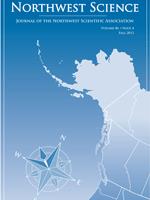Despite Yellowstone National Park's (YNP) long history and well studied large mammals and vegetation, beavers (Castor canadensis), an important ecosystem driver, have received relatively little study. We summarize population surveys of beavers that began in 1921 and continued up to the present. The first surveys (1921 and 1923) were from the ground and conducted in a limited area in the northern portion (northern range; NR) of the park. Twenty-five colonies were found and beavers were considered abundant and using aspen (Populus tremuloides) and willow (Salix spp.) as a food source and building material. A follow up survey in 1953 found 6 NR sites, but none of the earlier sites from the 1920s were active and no aspen use was reported. Some locations were reported from the park interior. A limited ground survey was conducted in 1979–80. In 1988–89 and 1994 two incomplete, mostly ground surveys were conducted and estimated 71 and 44 colonies, respectively, in YNP. In 1996, 1998, 1999, 2001, 2003, 2005, 2007 and 2009 complete, park-wide aerial surveys were conducted and active colonies ranged from 44 (1996) to 127 (2007) with an increasing trend. Therefore, in a period of about 90 years (1920s—2000s) the beaver population in the northern portion of the park appears to have declined then increased probably because of a willow recovery.
How to translate text using browser tools
1 September 2012
The History and Current Status and Distribution of Beavers in Yellowstone National Park
Douglas W. Smith,
Daniel B. Tyers

Northwest Science
Vol. 86 • No. 4
September 2012
Vol. 86 • No. 4
September 2012
aspen
beavers
Castor canadensis
willow
Yellowstone




